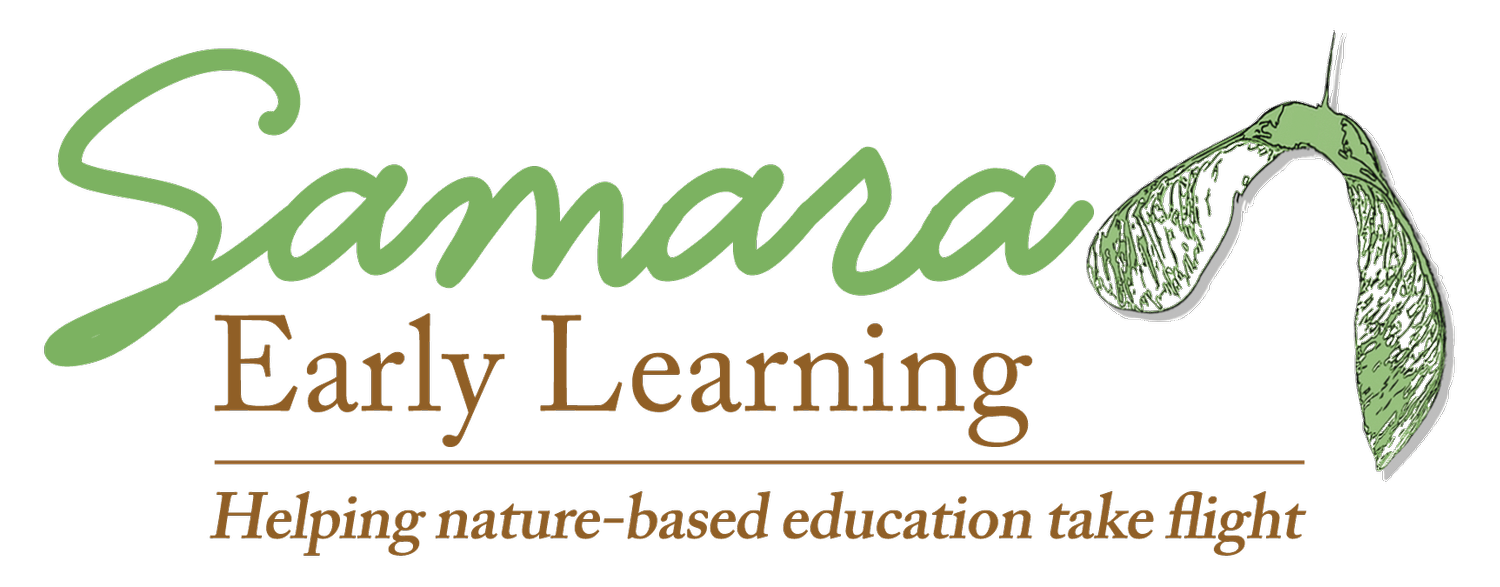How nature-y is it?
This post originally appeared in Dr. Rachel A. Larimore’s weekly Samara newsletter on March 7, 2023. If you’re interested in receiving these emails, scroll to the bottom of this page to subscribe.
The number of nature-based programs is continuing to increase throughout the world. This is great news!
And yet,...not all of these programs are really “nature-based.” Some programs go outside every day and call that enough.
Yes, daily outdoor experiences are vital to nature-based programs. But, going outside is not enough. Nature experiences should be frequent and integrated into learning throughout the day–during whole group activities, in materials available for play, and in conversations.
In other words, nature is core to teaching and learning in a nature-based program.
While that may sound simple sometimes it’s hard to know where to start bringing nature into the curriculum. If you’ve been working in a nature-based program it may also be difficult to know “how are we doing with this nature-based thing?”
That is why my colleagues Patti Bailie and Arianna Pikus, and I wrote the book Evaluating Natureness: Measuring the Quality of Nature-based Classrooms in Pre-K through 3rd Grade.
We wanted to create a tool that would be useful for self-reflection, conversations related to quality rating improvement systems, and for research on the nature-based approach. We also wanted to provide guidance on how to adjust practice towards nature. I’m proud to say that I think we’ve done it!
Inside Evaluating Natureness are the Nature-Based Education Rating Scales (NABERS) for both PreK and K-3 which helps professionals reflect on their practices in the following categories:
Program goals and curriculum practices–Does the program demonstrate dual goals of early childhood and environmental education with nature as the organizing concept?
Staffing–Are teachers prepared for and trained in nature-based pedagogy? To what extent do administrators support nature-based efforts?
Environment–Do the three learning spaces–inside, outside, and beyond–provide a meaningful context for integrating nature experiences and ideas?
Community partnerships–Does the program work with local, nature-based organizations?
Family engagement–Does the program support families to engage with the nature-based approach?
Wherever you are on your nature-based journey, I hope you’ll consider these questions as you think about just how nature-y your program is.
Keep changing lives,
Rachel
Rachel A. Larimore, Ph.D., Chief Visionary of Samara Learning


